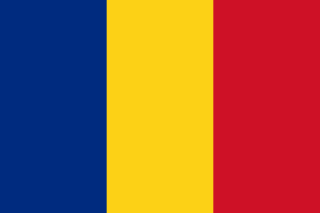| |||||
| Decades: | |||||
|---|---|---|---|---|---|
| See also: | |||||
Events from the year 1963 in Romania. The year saw the continued de-satellization of Communist Romania.
| |||||
| Decades: | |||||
|---|---|---|---|---|---|
| See also: | |||||
Events from the year 1963 in Romania. The year saw the continued de-satellization of Communist Romania.

Ion Mihalache was a Romanian agrarian politician, the founder and leader of the Peasants' Party (PȚ) and a main figure of its successor, the National Peasants' Party (PNȚ).

Romania competed at the 1992 Summer Olympics in Barcelona, Spain. It was the first Summer Games for the nation after the fall of Communism in 1989. 172 competitors, 104 men and 68 women, took part in 128 events in 18 sports.

Romania competed at the 1968 Summer Olympics in Mexico City, Mexico. 82 competitors, 66 men and 16 women, took part in 64 events in 9 sports.

The Sighet Prison, located in the city of Sighetu Marmației, Maramureș County, Romania, was used by Romania to hold criminals, prisoners of war, and political prisoners. It is now the site of the Sighet Memorial Museum, part of the Memorial of the Victims of Communism.
Constantin Gheorghe Banu was a Romanian writer, journalist and politician, who served as Arts and Religious Affairs Minister in 1922–1923. He is remembered in literary history as the founder of Flacăra review, which he published in two editions, alongside Petre Locusteanu, Ion Pillat, Adrian Maniu, and, later, Vintilă Russu-Șirianu. A best-selling magazine for its time, it functioned as a launching pad for several writers of the Romanian Symbolist movement.

Romanian Revival architecture is an architectural style that has appeared in the late 19th century in Romanian Art Nouveau, initially being the result of the attempts of finding a specific Romanian architectural style. The attempts are mainly due to the architects Ion Mincu (1852–1912), and Ion N. Socolescu (1856–1924). The peak of the style was the interwar period. The style was a national reaction after the domination of French-inspired Classicist Eclecticism. Apart from foreign influences, the contribution of Romanian architects, who reinvented the tradition, creating, at the same time, an original style, is manifesting more and more strongly. Ion Mincu and his successors, Grigore Cerchez, Cristofi Cerchez, Petre Antonescu, or Nicolae Ghica-Budești declared themselves for a modern architecture, with Romanian specific, based on theses such as those formulated by Alexandru Odobescu around 1870:
"Study the remains – no matter how small – of the artistic production of the past and make them the source of a great art (...) do not miss any opportunity to use the artistic elements presented by the Romanian monuments left over from old times; but transform them, change them, develop them ..."
Events from the year 1947 in Romania. The year saw the abdication of Michael I of Romania and foundation of the Romanian People's Republic.
Events from the year 1946 in Romania. The year started with the end of the royal strike and ended with the Romanian Communist Party win the first election following the introduction of women's suffrage.
Events from the year 1939 in Romania. The year saw the assassination of Armand Călinescu.
Events from the year 1954 in Romania. The year was marked by the 1954 Romanian blizzard.
Events from the year 1956 in Romania. At the University of Bucharest, students demonstrated in support of the Hungarian Revolution. The year also saw the end of the last SovRom joint enterprises and the first broadcast from TVR, Romania's first TV network.

Events from the year 1957 in Romania. During the year, Romania hosted the first European competition for female artistic gymnastics. The country enacted laws to ban prostitution and slavery, and provide for abortion on demand. Notable deaths include the sculptor Constantin Brâncuși.
Events from the year 1958 in Romania. The year saw the end of the Soviet occupation of Romania with the last Soviet troops leaving the country.
Events from the year 1959 in Romania. During the year, the country hosted the first International Mathematical Olympiad.
Events from the year 1933 in Romania. The year saw the Grivița strikes, the formation of the Little Entente, and the assassination of the Prime Minister Ion G. Duca.
Events from the year 1960 in Romania. At the 1960 Summer Olympics, Iolanda Balaș wins the first Romanian Olympic gold medal.
Events from the year 1961 in Romania. The year saw the creation of the title of President of the State Council for the de facto head of state. The first office holder was Gheorghe Gheorghiu-Dej, who was already General Secretary of the Romanian Communist Party.
Events from the year 1962 in Romania. The year saw the end of the collectivization of agriculture and increasing de-satellization of Communist Romania as the country last publicly supported the Soviet Union against China and took part is Warsaw Pact army exercises.
Events from the year 1964 in Romania. The year saw increasing separation from Soviet influence.